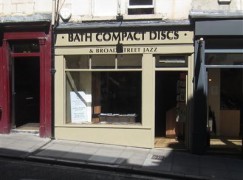The Slipped Disc daily comfort zone (242): Nailed it
mainBest piece ever written for percussion?


The German label Dabringhaus und Grimm has ordered…

We have been notified of the passing on…

We are hearing from disappointed concertgoers who booked…

It is no secret that, for the past…

Session expired
Please log in again. The login page will open in a new tab. After logging in you can close it and return to this page.
Comments